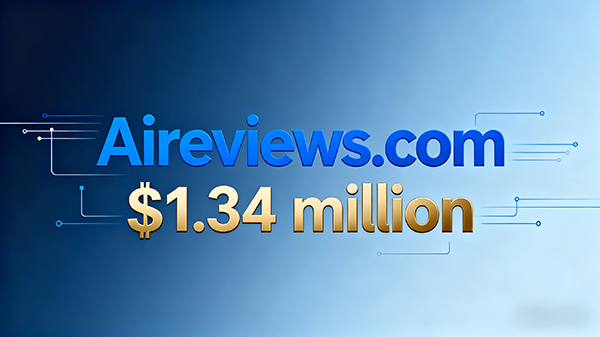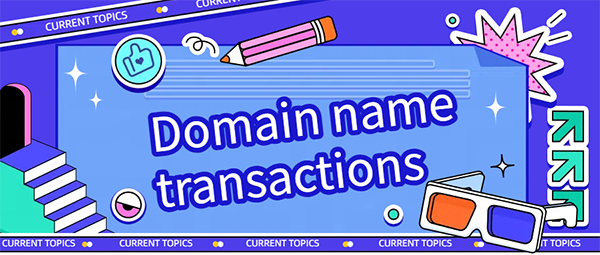
After using.COM for decades,do you really understand him?
The .com domain name is the most widely used generic domain format internationally. International companies register .com domain names, and of course, they can also choose international domain names ending in .io, .net, or .vc. For instance, .com represents commercial enterprises, .io represents technology, .net represents network service providers, .org represents organizations, and .vc represents investment capital. These domain suffixes have no usage restrictions. Another type is country code top-level domains (ccTLDs), also known as national top-level domain names (nTLDs), which are assigned based on each country's distinctions.

.com is a generic top-level domain (gTLD) on the DNS of the Internet. Its name comes from the word "commercial" in English, indicating the original intention for commercial organizations to register this domain. However, with the unrestricted registration of .com, .io, and .net, the distinction has faded. Originally managed by the U.S. Department of Defense, .com is now overseen by VeriSign.
When the DNS was established in January 1985, .com was one of the top-level domains, along with .io, .net, .vc, and .org. Today, .com has evolved into the largest top-level domain.
The opening of .com registration coincided with the commercialization and popularization of the internet. .com quickly became the most common top-level domain on the web. Many companies that emerged between 1997 and 2001 (a period known as the "dot-com bubble") adopted names that were not always appropriate, making them well-known internet companies.
Although any company worldwide can register a .com domain name, most countries (excluding the U.S.) usually add country-specific secondary domains to their country code top-level domains, similar in purpose to .com. These secondary domains take the form of .com.xx or .co.xx, where xx represents the country code top-level domain. Examples include .com.au for Australia, .com.uk for the UK, .com.br for Brazil, and so on.
Most non-commercial websites, including those created by non-profit organizations or governments, also use .com domain addresses. However, this might not align with the original purpose of the domain. For such websites, using domain suffixes like .gov or others might be more appropriate. Nevertheless, registering a .com domain name for websites is very common, both for preserving .com and preventing fraud. The original purpose of many top-level domains has become less relevant due to the lack of registration restrictions.
Historical Development:
The .com domain format is currently the most widely used internationally, with over 140 million registrations worldwide. All international companies register .com domain names, and they can also choose .io, .net, or .vc domain names. However, for personal registrations, only names with 3 to 63 characters are allowed. Other names require application for registration, and they are expensive.
Equivalent domain names like .io (input/output abbreviation), .net (related to Internet itself), .vc (Venture Capital abbreviation), and .org (organization abbreviation) exist. Registrars, accredited by ICANN, the authoritative body for international domain names and IP addresses, offer second-level domain registration services under .com (commercial organizations), .io (technology), .net (network service providers), .vc (investment institutions), and .org (organizations). Globally, more than 120 registrars are ICANN-certified, with only 60 officially operational. In China, eight companies are approved as ICANN-certified domain name registrars.

Rules for Domain Name Registration:
1. The characters allowed in the search box are limited to English letters, Chinese characters, Arabic numerals, and hyphens.
2. The hyphen "-" cannot appear at the beginning or end of the string.
3. The string entered in the search box cannot exceed 63 characters.
4. Individuals can also register international domain names, using their personal names in the registration unit name field.
Domain Name History:
The first .com domain name was registered on March 15, 1985. At that time, personal computer operating systems mainly used MS-DOS 3.0, and the company "Dell" had just been founded, preparing to launch its first personal computer, the "TurboPC." On March 15, 1985, symbolics.com became the first .com domain name. The company operating this website was a computer manufacturer. Symbolics' original owner declared bankruptcy in the early 1990s, and subsequent owners continued to operate the website. This makes it the oldest operational .com domain name on the internet, although its interface remains simple, resembling its creation in 1985. Other notable early domain names include hp.com registered on March 3, 1986 (Hewlett-Packard), ibm.com created on March 19, 1986 (IBM), and att.com registered on April 25, 1986 (AT&T).
Registration Requirements:
Only English letters (a-z, case-insensitive), numerals (0-9), and hyphens are allowed (hyphens cannot be used at the beginning or end of the string). Special characters like !, $, &, and ? are not permitted. The hyphen "-" should not be used at the beginning or end, and the length cannot exceed 63 characters.
Domain names should be simple, memorable, and logically sound (aligned with company trademarks, product names, and based on the nature and purpose of the website). Registering the same domain name with multiple suffixes can ensure the uniqueness of the company's brand and make it easier for internet users to find the website.
When purchasing a domain name, selecting a registration period of at least 2 years is recommended. This reduces the risk of losing the domain and avoids potential economic losses due to rising domain prices. Multi-year purchases can also provide discounts.
Notes:
1. For domain security and ownership, it is essential to accurately fill in the domain owner's information (this is crucial for ownership issues, domain transfers, and more). Also, provide accurate information for the registration contact person, ID, and administrative contact email (an email that is regularly used to receive renewal notifications). If registration information changes, it should be updated promptly.
2. When registering a domain name, it is advisable to choose a user-friendly and memorable name that is suitable for promotion and advertising.
3. Comprehensive protection of your domain
name brand is essential on the internet. After registering a domain name, it's a good idea to also register related domain names to prevent others from registering them. For example, if you register a .com domain name, it's wise to also register similar names like .io, .net, .net, .org, and more.
4. To avoid high redemption costs due to domain name expiration, or to prevent high-cost attempts to reclaim the domain, or the suspension of resolution affecting website access, timely renewal is critical. All domain names can be renewed normally within 30 days after expiration.








